It's worth noting that almost all home microwave ovens must operate within the ~2.4 GHz ISM band as that's the allocation of spectrum where they're allowed to operate for regulatory reasons. If they attempt to operate outside the ISM band allocated to them, they will interfere with important, possibly life-safety-critical signals.
This means that as long as you have enough trust that your microwave oven follows international standards, you already know that its frequency is around 2.45 GHz +/- 50 MHz without any further measurements.
The exact tools and techniques may very well vary from company to company. However, the magnetron is designed to a particular frequency (by tweaking geometry scaling as Hearth points out in a comment); doing a direct calculation from Maxwell's Equations would require knowing c.
As part of the design and testing phase, the output will almost certainly be measured with a suitable probe/attenuator and an RF spectrum analyzer (i.e. a specific piece of test equipment for this purpose).
You will need to take some definition of a second, but that definition does not need to come from c and distance. All you need are some caesium-133 atoms and the ability to observe the hyperfine transition. A second is defined as:
taking the fixed numerical value of the caesium frequency ΔνCs, the unperturbed ground-state hyperfine transition frequency of the caesium-133 atom, to be 9 192 631 770 when expressed in the unit Hz, which is equal to s–1.
You could directly trap some caesium-133 in a suitable trap and compare the radiation from its hyperfine transition to the radiation from your microwave, but this would be impractical and expensive for most applications. Instead, that reference is used to calibrate a chain of derived references, ending up with some kind of frequency reference available to you for your experiment.
Another way of getting a precise frequency reference would be to use a GPSDO, or GPS-Disciplined Oscillator. GPS satellites themselves carry caesium clocks and transmit precise timekeeping signals; by tracking those signals it's possible to obtain your own precise frequency reference.
Once you have a precise frequency reference (which we obtained without c or a length standard), you can measure the frequency of the microwave radiation. A conceptually simple way to measure the unknown microwave frequency would be to use fast counters: count the ticks of a 100 MHz reference clock until you reach 100 million, while counting the cycles of the microwave radiation. If everything is as expected, you'll count around 2.45 billion cycles of microwave radiation in that same time period.
On the other hand, a commercial RF analyzer does fairly complex downmixing using its local oscillator as well as further processing to provide a full spectrum (including both the main energy and any sidebands), which is too complex to explain in full here.
Note that in the end, you still need a definition of length to obtain your final value of c, and you run into a slight circular reasoning issue here, because the BIPM definition of a meter does use c. Without c, you don't have a ruler marked in cm, in, or any other convenient unit.
If you truly want to compute the speed of light without the need for c, you may be reduced to saying "x chocolate pieces per second" and using the chocolate piece itself as your ruler.
